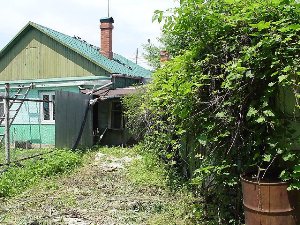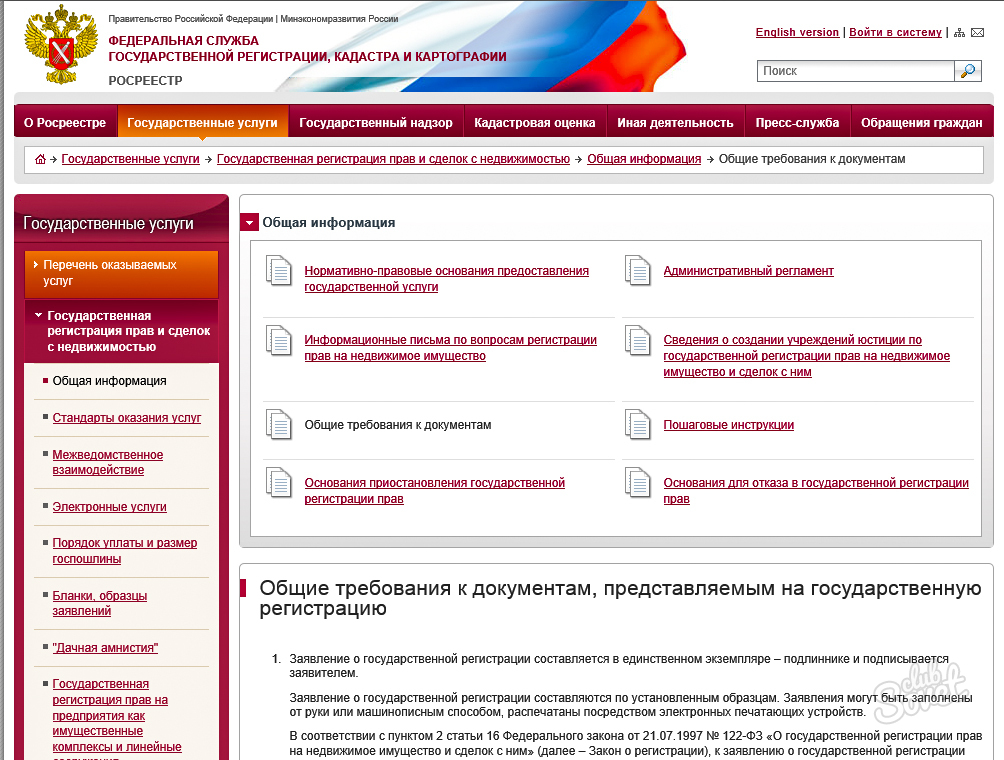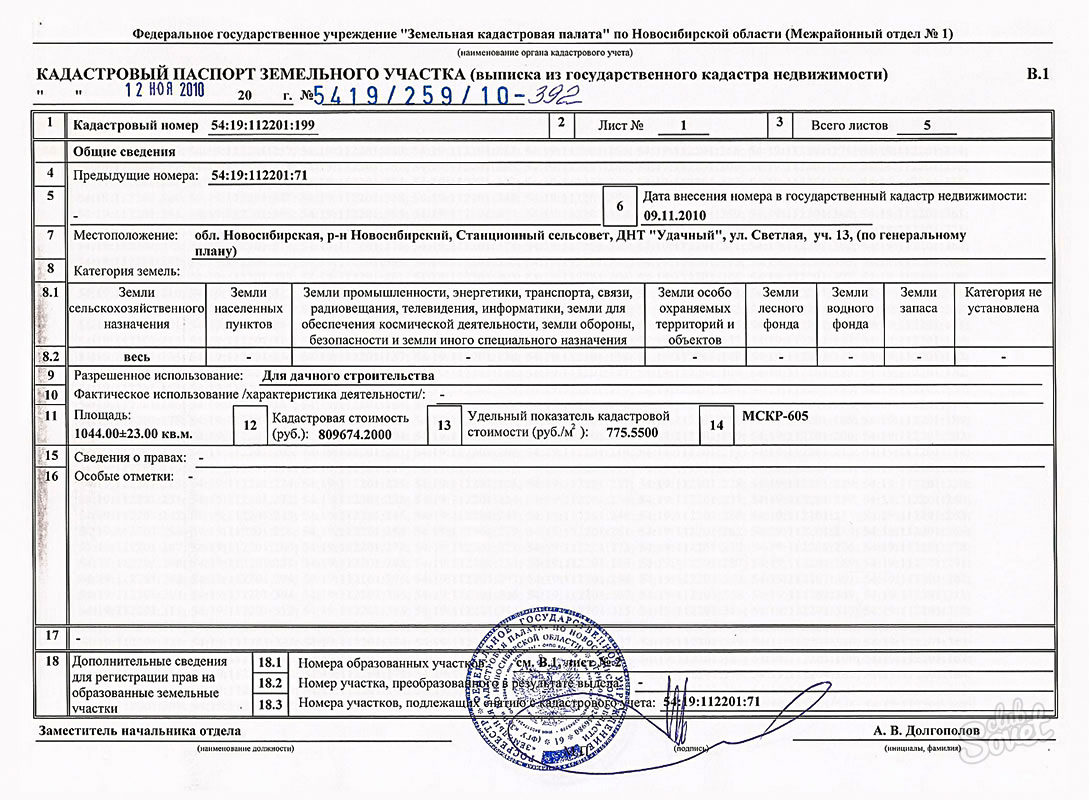How to sell a plot if there is a mandatory participant. Sale of land in shared ownership
Ever since Russian Federation citizens were allowed to legally register plots of land as personal property; disputes and litigation over determining the procedure for use of both entire plots of land and their shares continue.
Disputes over land ownership can be very different, but they are united by one thing - two or more owners claim the right to legal ownership of a land plot. Everyone fights for their shared property on the basis of full ownership, permanent perpetual use or lifelong inheritable right.
The concept of "share" land plot“, from the point of view of its owner, implies the will of the owner to use the land plot at his own discretion, regardless of agreement with other owners of shares of the same plot of land.
Share of a land plot: when is a land plot considered divisible or indivisible?
A plot of land can be considered as the property of one, two or more persons. In addition, do not forget about ownership options, when several people own common property (in our case, a plot of land) on equal rights. Shared ownership, like common ownership of land plots with equal rights, provides for the legal rights of each citizen as the owner of land, adjusted for the specifics of land ownership.
Land plots can have the status of “divisible” or “indivisible”. According to Russian legislation, only those plots of land are recognized as divisible which, when divided, do not lose a significant component of their significance. Each share of such a plot can be considered as a small proprietary plot, retaining regulatory rights for development or other use.
Indivisible land plots cannot be divided into shares, as this will cause irreparable harm to their rational use. For example, the building on which an apartment building is built can be considered indivisible.
Share of land: real and ideal shares
The owner of the land share determines its size according to the land management project, which is drawn up according to a documented agreement between all owners of shares in one plot of land. Often, heirs or owners cannot come to a common agreement on the ownership rights to land shares, then all issues are resolved through the court or with the intervention of local governments.
In which two or more people own, can be allocated real or ideal shares land ownership. The real share of a land plot is the part of the land whose boundaries are established on the ground (in situ). In this case, the size of the share must be such as not to lose its significance, the essence of the concept of “separate plot of land” intended for construction, a vegetable garden, a garden or other needs.
The ideal share of a plot of land is not established on the ground. The documents simply indicate its size as a fraction of the size of the whole plot of land.
How is the share of a land plot allocated in practice?
In practice, the distribution of land shares between owners takes place in strict accordance with the land management project. All accepted land management projects must undergo state examination mandatory, otherwise projects cannot be considered legal. The following list of possibilities is provided:
- Both delimitation and unification of shares of a land plot. In other words, the land plot can be divided into real equal or unequal shares. Moreover, in some cases, when drawing up land management projects, issues of dividing a plot of land into levels are considered: underground, above-ground and above-ground. Each share or each level is assigned to different owners. The same rule also applies in the opposite direction - land shares can be combined into a single plot of land with one owner.
- The external boundaries of a land plot can be improved if all owners of land shares on this plot are interested in this. In other words, the area of the external borders may expand or decrease for any reason (but not more than 6% of the total area of the entire land plot). Most often this happens when laying roads or utilities on a land plot.
How is registration of land shares carried out?
 According to the current Russian legislation (dated April 19, 2010) on the registration of ownership rights to real estate, a share (part) of a land plot cannot be considered an independent (separate, personal) piece of real estate. Therefore, in order to register your share of a land plot, you need to transfer it to the status of a separate land plot. Or a single registration of a plot of land divided into shares is carried out jointly by all owners of shares of this plot. Assigning a cadastral number to a share of a land plot does not at all mean the individuality of this object as an independent real estate.
According to the current Russian legislation (dated April 19, 2010) on the registration of ownership rights to real estate, a share (part) of a land plot cannot be considered an independent (separate, personal) piece of real estate. Therefore, in order to register your share of a land plot, you need to transfer it to the status of a separate land plot. Or a single registration of a plot of land divided into shares is carried out jointly by all owners of shares of this plot. Assigning a cadastral number to a share of a land plot does not at all mean the individuality of this object as an independent real estate.
Can a share of a land plot be purchased or sold?
The procedure for buying or selling a share of a land plot is legalized by Russian legislation. But there is such a nuance as "pre-emptive rights" For example, in order to formalize a transaction to sell your share of a land plot to a third-party buyer, you need to obtain written and notarized consent of the remaining owners of shares of this land plot to complete the transaction.
Owners of other land shares have a legal priority right to purchase the share being sold as a matter of priority. In this case, the seller of his share must, in the request that he submits for signature to each co-owner of the land plot, note the final cost of the land share being sold. This value cannot be changed if other shareholders refuse to purchase the land, otherwise the transaction may be contested in court within three months and declared invalid.
What responsibilities do owners or lessees of land shares have?
Shares of a land plot can be leased to other persons or inherited according to the general norms of Russian legislation. At the same time, the state imposes certain obligations on the owners and tenants of shares of a land plot, the violation of which is contrary to the law, since the land is a natural valuable object.
- Owners or tenants of land shares must pay rent or accrued land tax on time.
- The land must be effectively used for its intended purpose. If a share of the land belongs to a farm, then it must be fertilized. Environmental pollution of the land as a result of negligent economic activities is not allowed. If it is contaminated with chemical or radioactive substances, dried out, swamped, or subject to water or wind erosion, the owner may be subject to administrative or criminal penalties.
- Each owner of a share of a land plot must not infringe on the property rights of other owners of shares of land or legal tenants.
- The owner of a share of a land plot can carry out construction on his part of the land in accordance with the standards established by such organizations as: the land management committee, architectural and urban planning organization, sanitary, fire and environmental services. The tenant of a land share must also coordinate all his actions regarding the construction of buildings with the owner of the land share.
Summarizing all of the above, it is necessary to clarify and the following nuances. Before buying a share in a land plot to build a house, a summer cottage or to carry out agricultural work, you need to find out from the district land committee or the local authorities of the region what work can be carried out on your part of the land plot and what is impossible due to circumstances. Perhaps the local authorities have prospects for transferring these lands to another purpose, and then the registration of the land plot will not be allowed, much less the construction of residential or commercial buildings there.
OrderSale of land plots located in public shared ownership, is regulated by the Land Code and several articles of the Civil Code of the Russian Federation. Whatever legislative act is followed, a mandatory fact for completing a transaction for the sale of a share of land is that the plot must be divided and all its boundaries must be taken into account in the cadastral passport for this share. The seller of the land must be the legal owner of this share, and have a certificate confirming his ownership of this plot.
Despite the fact that the owner of a share of a land plot has the right to fully dispose of his piece of land, nevertheless, these rights are limited by law. The limitation of the rights to dispose of your share of the land lies in the fact that, having set yourself the task of how to sell a plot of shared ownership , the owner of the plot does not have the right to immediately put this plot up for free sale. The fact is that the co-owners of other shares of the same land plot have a pre-emptive right to purchase the plot of land being sold. Making a deal purchase and sale shared ownership of a land plot to another third party is possible only upon receipt of notarized consent from other co-owners of the land plot. But in order to obtain the consent of each co-owner to sell a share to a third party, you need to offer in writing, indicating the exact price, to buy the part of the land owned by the seller. If all remaining owners refuse to purchase a share of the land plot, the seller has the right to put up for sale his share of the land plot to a third party at a higher price than was offered to the co-owners of this land plot. Even if there is consent given to the share owner by other co-owners to sell their share of the land, he does not have the right to sell his land at a price less than what was offered to the other co-owners. If such a violation is discovered, the co-owners can protest the actions of the seller in judicial procedure within three months from the date of signing the purchase and sale agreement.
The complexity of completing a transaction for the sale of a land plot that is in shared ownership is obvious, therefore, in order to correctly fill out all documents and confirm the legality of persons to dispose of shares of land plots, the best option would be to obtain legal advice. Only after this, being confident in the correctness of your actions, can you enter into a contract for the sale and purchase of a land plot that is in shared ownership. If you have a need to resolve problems related to a land plot, our specialists will always help you find the optimal solution.
Today, more and more people are realizing the benefits of living on their own land. Therefore, land purchase and sale transactions are becoming more popular every year. It is not uncommon for the owner of property in such a transaction to be not one person, but several co-owners. In this case, the owner is interested in how to sell a share of the land plot.
The first and easiest option from a cost perspective would be to sell your share of the property. You will not have to carry out land surveying work, however, to complete the purchase and sale, you will need the permission of the remaining owners and their waiver of the pre-emptive right to purchase.- In the second option, you will need to allocate your part of the land plot, completely transferring the rights to use it to yourself. For this:
- Check whether the plot and the right to it are registered in Rosreestr.
- Order technical documentation from the land management organization (the cadastral engineer must determine the boundaries of the land plot, geodetic coordinates, draw up a cadastral plan and set boundary markers).
- Copies of land management documentation should remain in your hands.
- Contact your local authority to apply for registration. You will need the following documents:
- copy of the passport;
- land management documentation in paper and electronic form;
- certificate of payment of state duty;
a copy of the document on assignment of a tax number;



- List of documents required to complete a purchase and sale transaction:
- passports of the parties;
- title document; certificate of state registration
- rights to the site;
- cadastral passport;
- purchase and sale agreement (3 copies);
- spouse's consent;

- The purchase and sale agreement must contain the following clauses:
- passport details of the parties;
- detailed description of the site (its cadastral number, location, purpose, etc.);
- price and payment procedure;
- rights and obligations of the parties;
- emergence of property rights;
- liability of the parties; additional conditions, which do not contradict current legislation.
The moment of transfer of ownership rights is registered in the territorial department of the Federal Service for State Registration, Cadastre and Cartography.

Download here.
As can be seen from the two options for selling a plot, if the owner of the share has the opportunity to come to an agreement with other owners, then it is more convenient to sell the unallocated part. Subsequently, the buyer, having become a co-owner, can take care of the documentation himself. If relations with other owners do not go well, the only way out will be to separate your part and separate it into an independent plot of land.
Sometimes there is a need to sell a plot of land, but not all of it, but only an unnecessary part of it. Circumstances can be different, for example, there is a house with a small vegetable garden on the land, but you do not use the rest of the territory and do not have the opportunity to cultivate the land. In this case, it makes sense to sell part of the plot.
You need to allocate part of the territory into a separate area and legalize it as an independent territory. This is not easy to do, considering how many authorities you need to go through and collect documents. First of all, it is necessary to finance land management work.




- A copy of your passport (take the original with you);
- A copy of the power of attorney (if any);
- A copy of the identification code;
- Technical documentation received from the land management organization, in printed and electronic versions;
- Receipt for payment of services.



The procedure for dividing a land plot is a long process, please be patient, because a full set of documents can be completed within a year.



















